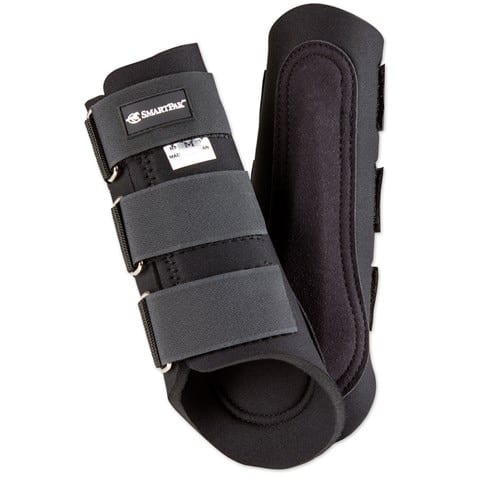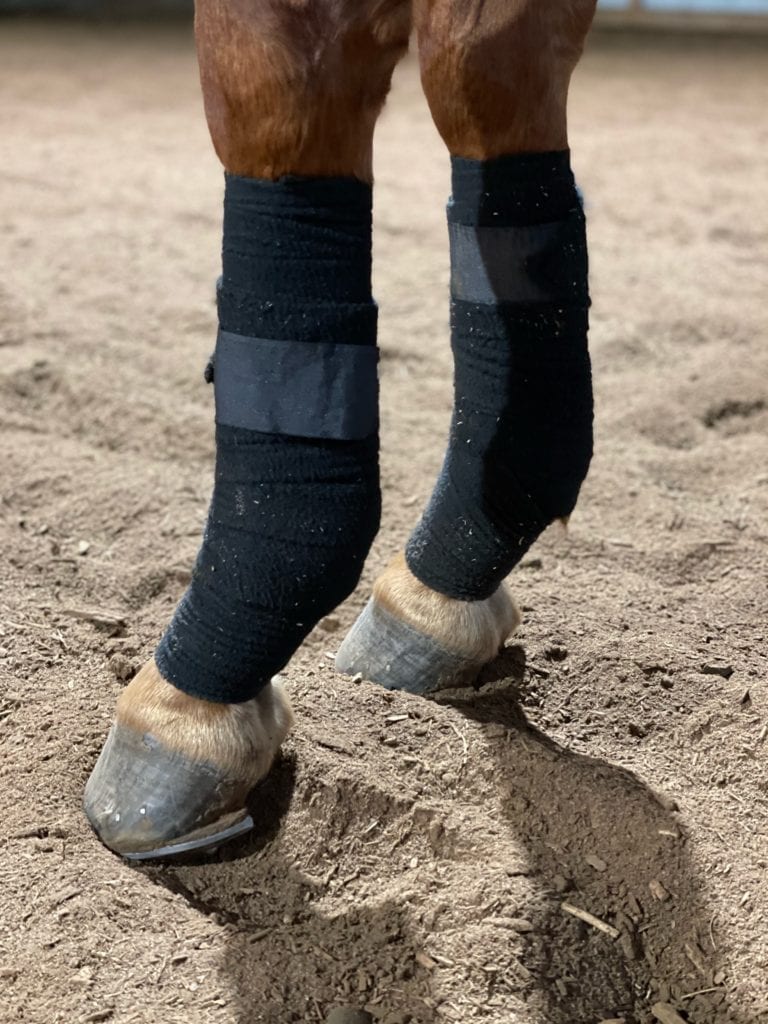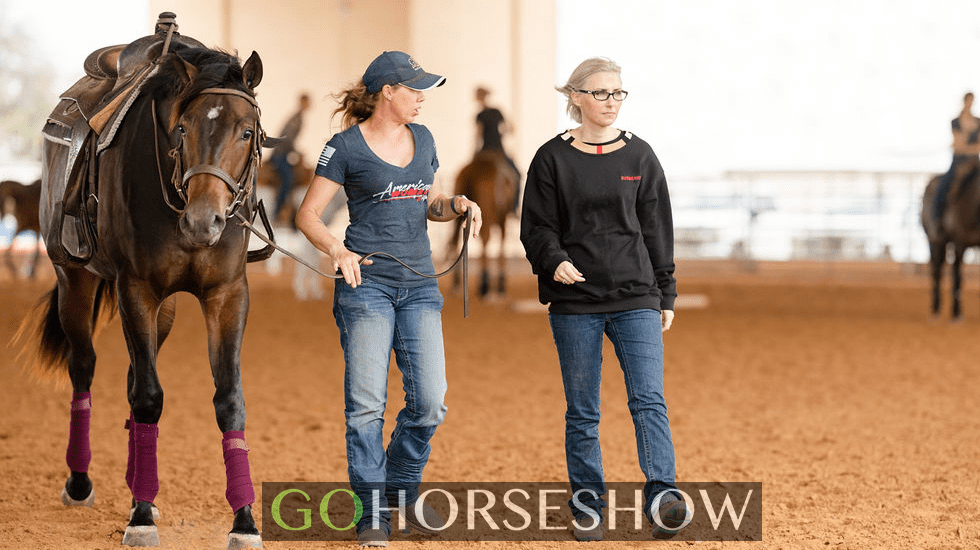Before mounting your horse, choosing what leg protection you use may be a tough choice to make. Some people may not use leg protection, whereas others debate using splint boots or polo wraps.
There are different opinions on whether to use splint boots or polo wraps; both will protect your horse. Dr. Nicolas Ernst Castro, an equine vet at the University of Minnesota’s Leatherdale Equine Center, says that it would depend on the riding you’re doing.
 “If my horse were a jumper, I would say the splint boots would be better. If you’re talking about dressage or any other, I think the polo wraps would help as well. It would depend on what activity your horse would do. The higher athleticism, I think splint boots would be better, but if you’re doing pleasure riding or light sports, I think the polo wraps should be fine.”
“If my horse were a jumper, I would say the splint boots would be better. If you’re talking about dressage or any other, I think the polo wraps would help as well. It would depend on what activity your horse would do. The higher athleticism, I think splint boots would be better, but if you’re doing pleasure riding or light sports, I think the polo wraps should be fine.”
Both John Boxell and Lisa Ligon are professional trainers and judges who use polo wraps. “I’d probably prefer polo wraps myself just for the support in their front legs on a younger horse. If it’s an older horse, I don’t worry too much about that, and the splint boots are fine,” says Boxell.
Lisa Ligon prefers polo wraps. “I think that you can give more support with a polo wrap. They’re easy to wash and when you use them, they don’t rub a lot, so you don’t get a lot of sand or skin abrasion from friction between the dirt and their leg.”
 Halter trainer Tom Robertson also prefers polo wraps. “I think it gives them more support. It’s a little softer and not as abrasive.” He also says that he uses polo wraps for all ages. “Pretty much all of them wear polo wraps, at least up front.”
Halter trainer Tom Robertson also prefers polo wraps. “I think it gives them more support. It’s a little softer and not as abrasive.” He also says that he uses polo wraps for all ages. “Pretty much all of them wear polo wraps, at least up front.”
Some people only use leg protection on the front legs, but others may use leg protection on both the front and the hinds. John Boxell uses polo wraps on both. “I do [use them on both], especially on the young horses. A lot of them, when they’re learning how to lope or carry themselves, they’ll get their back ankles together and get some knock marks there, and if they get a little sore, they kind of quit. With the older horses, I usually wrap just the fronts. Some I’ll use back protection wraps or ankle bracelets.”
Robertson usually uses his polo wraps on just the front legs, but it would depend on the horse. “They all wear polo wraps up front. Some that I think will interfere a little bit will wear them behind too.”
Additionally, Lisa Ligon says that “Some of that would depend on your horse. You should probably always do front leg protection because a horse carries about 60% of its weight up front, so that’s going to be the area that gets more stress. If you have a horse that had an injury or you were worried about it, then I think you could wrap the hinds. As long as you wrap them properly, it doesn’t hurt anything to wrap them.”
 Dr. Ernst believes that it also depends on the owners or trainers. “Owners and trainers usually know their horses well, so if they know that the horse is prone to problems up front or in the back, I think that would be a personal preference.”
Dr. Ernst believes that it also depends on the owners or trainers. “Owners and trainers usually know their horses well, so if they know that the horse is prone to problems up front or in the back, I think that would be a personal preference.”
If you do not use leg protection at all, you could be risking injury. Dr. Ernst says that he sees injuries from having no leg protection. “Most of them are tendentious or pressures toward the tendon,” Ernst explains. He also says that some regions of the leg are more critical to be protected. “Commonly, the areas that we see on trauma are usually from the carpus down or the hock down in the back legs. I would say the cannon bone area is usually prone to trauma.”
 Whether you’re using polo wraps or splint boots, you want to make sure you’re applying them correctly. “I roll the tendons in. You want to get them snug, but you don’t want to get them so tight that you take a chance of blowing a tendon,” says John Boxell. If you put the leg protection on incorrectly or if you put them on too tight, you could be doing a lot more harm than good.
Whether you’re using polo wraps or splint boots, you want to make sure you’re applying them correctly. “I roll the tendons in. You want to get them snug, but you don’t want to get them so tight that you take a chance of blowing a tendon,” says John Boxell. If you put the leg protection on incorrectly or if you put them on too tight, you could be doing a lot more harm than good.
Dr. Ernst also thinks that they should be just the right amount of tight. “For the splint boots, you would want to follow the manufacturer’s recommendation. You want them snug, but not tight. For the polo wraps, when they slip or move, that’s where there are problems. You need to know how to put one on and when you have inexperienced people, make sure that somebody’s there to teach them or help them.”
Tom Robertson suggests that you should wrap them higher. “Protecting the ankle is the big thing for overreaching and hitting those growth plates on the back. I always end up high, just below the knee where you’d worry about a splint or hitting themselves just below the knee.”
There are different perspectives and opinions on whether to use splint boots or polo wraps. Since it has not been proven that one is better than the other, the best advice is to use your judgment and what you know works for your horse.
Do you have a preference? Let us know what you use and why.








